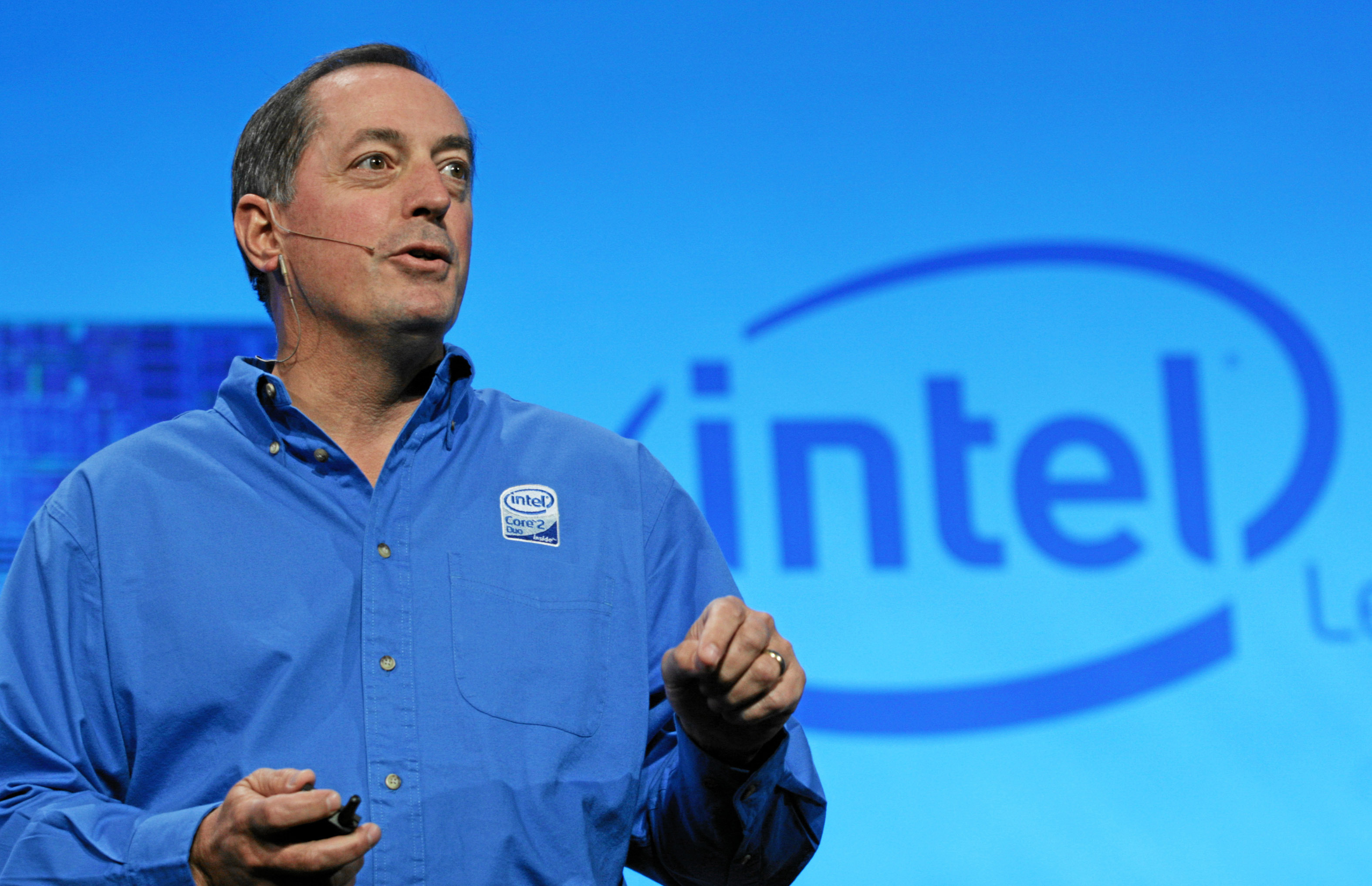Intel Announces Record Quarterly Earnings for Q2
Intel has reported yet another record financial quarter for Q2 2011.
Intel yesterday posted its financial earnings for the second quarter of 2011, revealing a non-GAAP net income of $3.2 billion, which represents a 10 percent increase over the same period last year. Revenue came in at a record $13.1 billion, up $2.3 billion or 22 percent from the same period in 2010. Operating income was posted at $4.2 billion, up 6 percent year-over-year, and EPS (earnings per share) was 59 cents, up 8 cents or 16 percent year-over-year. Gross margin was 62 percent, down 5.5 percentage points year-over-year. On a GAAP basis, the company reported second-quarter revenue of $13.0 billion, operating income of $3.9 billion, net income of $3.0 billion, and EPS of 54 cents.
"We achieved a significant new milestone in the second quarter, surpassing $13.0 billion in revenue for the first time," said Paul Otellini, Intel president and CEO. "Strong corporate demand for our most advanced technology, the surge of mobile devices and Internet traffic fueling data center growth, and the rapid rise of computing in emerging markets drove record results. Intel’s 23 percent revenue growth in the first half and our increasing confidence in the second half of 2011 position us to grow annual revenue in the mid-20 percent range."
According to Intel, PC Client Group revenue is up 11 percent year-over-year and Data Center Group revenue up 15 percent year-over-year while Atom microprocessor and chipset revenue is down 15 percent year-over-year. The company expects revenue of $14 billion, plus or minus $500 million, and gross margin percentage of 64 percent, plus or minus a couple of points, for the third quarter. Non-GAAP revenue is expected to be about $14.1 billion, plus or minus $500 million and excluding certain acquisition-related accounting impacts.
Get Tom's Hardware's best news and in-depth reviews, straight to your inbox.

Jane McEntegart is a writer, editor, and marketing communications professional with 17 years of experience in the technology industry. She has written about a wide range of technology topics, including smartphones, tablets, and game consoles. Her articles have been published in Tom's Guide, Tom's Hardware, MobileSyrup, and Edge Up.
-
whysobluepandabear With Sandy Bridge, this hardly comes as a surprise. They're kicking AMDs ass. Have been for a while now. Can anything even match the i5-2500k for the same, or lower price?Reply -
pbrigido That's great news. Now hopefully AMD will have equally good news when they report their quarterly earnings during after market hours today. A strong chip sector is always good for the consumer.Reply -
jacobdrj Unless AMD decides to focus completely on some kind of new architecture or product, I don't see how they can compete with Intel unless they steal all of Intel's process engineers... If AMD doesn't learn how to shrink their process down SIGNIFICANTLY, I don't think they will be able to catch up with Intel...Reply -
sunflier pbrigidoThat's great news. Now hopefully AMD will have equally good news...Yeah, hopefully, but it might take the release of Bulldozer to make that happen.Reply
-
-Fran- jacobdrjUnless AMD decides to focus completely on some kind of new architecture or product, I don't see how they can compete with Intel unless they steal all of Intel's process engineers... If AMD doesn't learn how to shrink their process down SIGNIFICANTLY, I don't think they will be able to catch up with Intel...Reply
You can have the best engineers on earth working for you, but if you're R&D budget is 1/10th of the competition (was that the correct number?), is not gonna help that much... That doesn't work for an excuse anyway, but AMD actually gives competition to the market with penny change (on Intel's comparison, lol).
Anyway, I also hope for AMD to make a comeback this gen, hopefully. We kinda need stronger competition.
Cheers! -
f-gomes That's what happens when you have the best product line for over 5 years now. Come on, AMD, get your shit together, we need you!Reply -
noob2222 jacobdrjUnless AMD decides to focus completely on some kind of new architecture or product, I don't see how they can compete with Intel unless they steal all of Intel's process engineers... If AMD doesn't learn how to shrink their process down SIGNIFICANTLY, I don't think they will be able to catch up with Intel...LEARNING has nothing to do with it. It costs 1.5B to build a new fab, Intel can build 2 per quarter if they wanted to, thats 8 new fabs a year. Learning has nothing to do with being able to throw money at it.Reply
If you want to think of something sad, AMD has 1/100th the revenue as Intel but can still compete. If AMD would be faster again, Intel would be the laughing stock of the business. This is why Intel just throws money at their problems. -
BSMonitor ReplyLEARNING has nothing to do with it. It costs 1.5B to build a new fab, Intel can build 2 per quarter if they wanted to, thats 8 new fabs a year. Learning has nothing to do with being able to throw money at it.
If you want to think of something sad, AMD has 1/100th the revenue as Intel but can still compete. If AMD would be faster again, Intel would be the laughing stock of the business. This is why Intel just throws money at their problems.
Throwing money at it produces a more efficient processor design?? Intel threw all their money into revamping their x86 strategy and came up with a higher performing chip without the benefit of a memory controller on the CPU die. AMD, took the easy performance jump with the memory controller integration, and it turns out it was premature. Now they are scrambling to build a CPU that can actually compete clock for clock with Intel.
They simply busted their one nut, too soon.
And dumb dumb, 1.5 is ~1/10 of the 13.5 in your scenario.. not 1/100th -
ta152h BSMonitorThrowing money at it produces a more efficient processor design?? Intel threw all their money into revamping their x86 strategy and came up with a higher performing chip without the benefit of a memory controller on the CPU die. AMD, took the easy performance jump with the memory controller integration, and it turns out it was premature. Now they are scrambling to build a CPU that can actually compete clock for clock with Intel. They simply busted their one nut, too soon.And dumb dumb, 1.5 is ~1/10 of the 13.5 in your scenario.. not 1/100thReply
AMD's success had little to do with AMD, and a lot to do with Intel. The Pentium 4 design simply didn't work. That made AMD designs appear good, but in reality, they were never anything special. They were vastly inferior to the Pentium M in terms of power/performance, and when the Pentium M was the basis for the next mainstream processor, it was game over for AMD.
The processor that helped AMD's financials the most was the Pentium 4, not any of their own.
Bulldozer shouldn't have much market impact, since it's still going to be inferior to Intel processors in most situations. It should help a little, but it's not going to be game changer. Bobcat has much better potential for gaining market share. Much better. It's a mass market product, with very good characteristics compared to what else is available in that market. It will have a much bigger impact than BD in terms of sales for AMD. -
jacobdrj Well, my take on the whole Intel vs. AMD thing has always been one of brute force vs. finesse.Reply
The reason is as some posters have mentioned: When Intel was sticking their heads in the sand and pushing the NetBurst architecture beyond reasonable thermal limits, focusing on clock frequency and in turn voltage regulation and cooling methods, AMD took the finesse approach, ignoring clock frequency all together, and focusing on smarter innovations like finding a good way to integrate native 32 bit emmulation on a 64 bit architectured system, adding the memory controller onto the processor die, and now integrating discreet class graphics on the same die as the CPU. Intel had to run the corporate course of NetBurst, get kicked in the pants by their Israel Mobile Processor team to get them on the right track, and use some small amount of finesse, both copying and licensing ideas implemented by AMD (memory controller integration and native 32 bit emmulation, respectively) while using a little bit of finesse mixed with a huge R & D budget mixed with their knowledge of having high temperature, high frequency follies, to make a better product, all while AMD was resting on its laurels...
Not to mention that AMD never even TRIED to advertise. I heard exactly 1 radio advertisement, once, right after AMD lost the performance crown to Core 2...
AMD needed a better marketing department. Had they a half decent marketing campaign, maybe they could have capitalized on their being the speed king during the Athlon 64 x2 days...
It is AMD's own fault for falling behind, and buying ATi at such an awful time...
